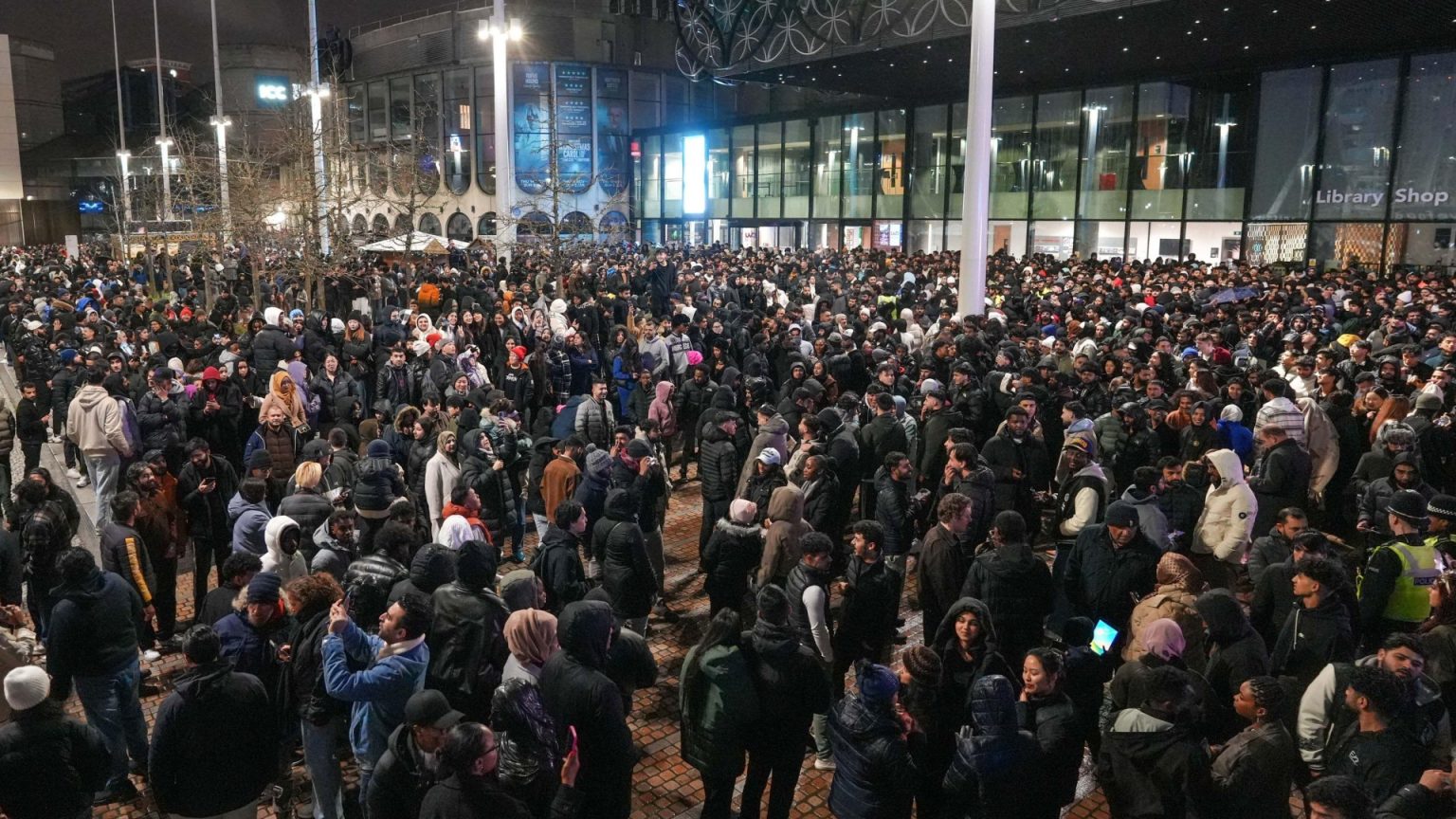A hoax fireworks event in Birmingham’s Centenary Square on New Year’s Eve drew thousands of unsuspecting revelers, leading to disappointment and a warning from local authorities. Despite West Midlands Police issuing a statement on social media around 2pm, clarifying that no official fireworks display was planned, crowds still gathered in anticipation. Images from the scene depicted people huddled together, phones poised to capture the nonexistent spectacle, while police officers patrolled the area. This incident underscores the rapid spread of misinformation online and the potential for significant disruption based on unverified information.
The false information about the fireworks display circulated online, creating a buzz and drawing large numbers of people to Centenary Square. Superintendent Emlyn Richards of West Midlands Police emphasized that the force did not want people traveling to the city center only to be met with disappointment. The police had actively worked to dispel the rumors, collaborating with Birmingham City Council to ensure public safety and manage the crowds that were already expected in the city for other New Year’s Eve celebrations. The council also issued its own warning via social media, advising residents against traveling specifically for the non-existent fireworks.
Despite the preemptive warnings from both the police and the council, thousands of people still congregated in Centenary Square, highlighting the challenge of counteracting misinformation once it has gained traction. The scene depicted numerous individuals with their phones raised, ready to film the fireworks display that never materialized. The presence of West Midlands Police officers illustrated the authorities’ attempts to manage the situation and ensure public safety amidst the confusion. This situation exemplifies the potential for social media and online platforms to rapidly disseminate false information, leading to real-world consequences.
The incident in Birmingham contrasted sharply with other New Year’s Eve events across the country, some of which were disrupted by inclement weather. Extreme conditions, including 75mph winds and heavy rain, forced the cancellation of planned celebrations in locations like Blackpool, Newcastle, the Isle of Wight, and Ripon. Meanwhile, chaotic scenes unfolded at a London fireworks display, where footage showed individuals breaching security barriers prior to the event. These diverse occurrences across the UK on New Year’s Eve highlight the various challenges encountered in managing large public gatherings and ensuring public safety.
The Birmingham hoax also served as a backdrop to the global New Year’s Eve celebrations. As usual, the Pacific island of Kiritimati, part of Kiribati, was the first to welcome the new year, followed by New Zealand, with a dazzling display over Auckland’s Sky Tower. While these locations ushered in 2025 with fanfare, the events in Birmingham underscore the importance of verifying information before acting upon it, especially when it involves travel and large gatherings. The incident also brings to light the role of authorities in managing expectations and ensuring public safety in the face of misinformation.
In conclusion, the fake fireworks event in Birmingham on New Year’s Eve serves as a cautionary tale about the spread of misinformation in the digital age. Despite proactive efforts by the police and local council to debunk the rumors, large crowds still gathered, demonstrating the difficulties in counteracting false information once it gains momentum. This incident highlights the need for critical thinking and information verification, as well as the challenges faced by authorities in managing public expectations and ensuring safety during large public events. The Birmingham hoax stands in contrast to other New Year’s Eve celebrations worldwide, some of which faced weather-related disruptions, emphasizing the complex factors that can influence public gatherings.




